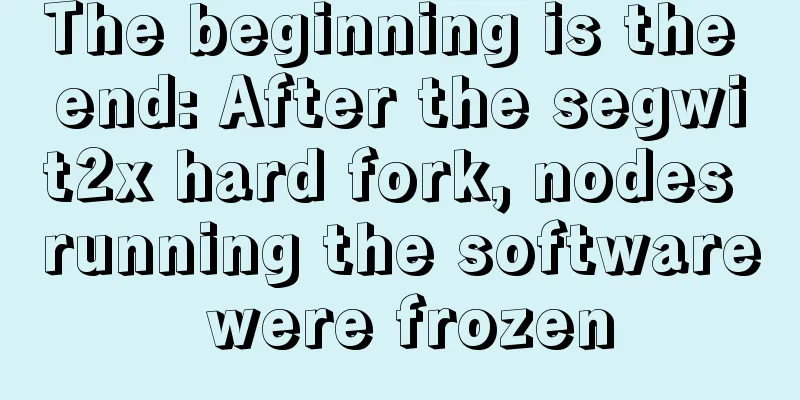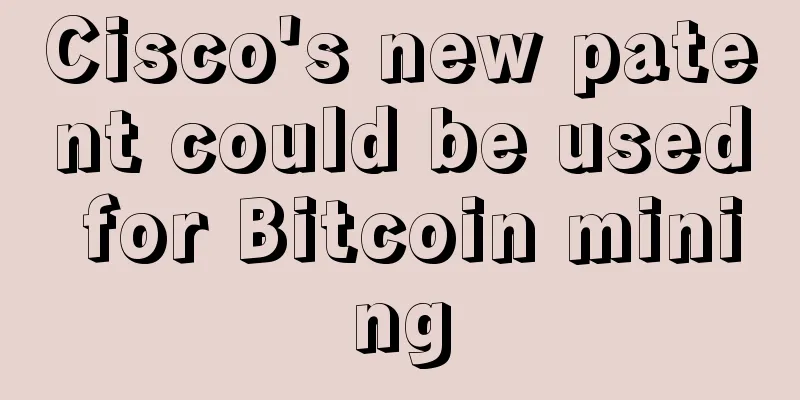The beginning is the end: After the segwit2x hard fork, nodes running the software were frozen

|
Although the segwit2x Bitcoin fork has been officially announced to be cancelled, there are still as many as 150 nodes still running the segwit2x code, and these nodes have now stopped accepting transaction blocks. According to Bitnodes, 95 nodes are running 2x software and are stuck at block 494,782. According to CoinDance, another Bitcoin network data site, 154 Bitcoin nodes are running “btc1” software at press time. This situation is very serious, especially since the main supporter of the segwit2x hard fork proposal, which initially received support from a large number of startups, miners and communities to expand the transaction capacity of the Bitcoin network, has already announced its abandonment on the project mailing list on November 8. However, despite the abandonment, dozens of nodes continue to run the latest version of the btc1 software. Today’s network strike appears to be caused by a problem with the code used to prevent miners from producing blocks larger than 1MB, which would push nodes running segwit2x to their own chain. As the Slack channel discussed the issue more and more, segwit2x developer Jeff Garzik released a patch designed to mitigate the creation of larger transaction blocks (since the segwit2x fork network is unlikely to continue without strong hash power support). While the Segwit2x fork itself will not proceed, today’s results also show a certain hostility emanating from those who support and oppose Segwit2x. A particular point of contention is the exact block height that will activate the fork. According to previous materials, the block height of the segwit2x hard fork activation is 494784. Developer Garzik criticized that this would lead to an "off-by-one" error. If executed, the nodes that planned to fork may be in trouble. In turn, Garizk believes that the operation of these codes is normal, except for the lack of computing power support. According to previous reports by Babbitt, BitGO CTO Jameson Lopp posted on Twitter that every BTC1 (SegWit2X) node operator was screwed and they were frozen at block height 494782 - two blocks before the fork should have occurred. " It remains to be seen whether some of the problematic nodes, some of which Bitdnodes data shows are hosted on hosting services from Amazon and Alibaba, will change their software. So unless blocks larger than 1MB arrive, the nodes running this software will have to remain stuck. |
<<: Bitcoin moves to the OTC market, with multiple hidden risks
Recommend
Deutsche Bank releases report: recommends companies explore blockchain technology
Although most cryptocurrency enthusiasts still fo...
Ukrainian authorities shut down illegal cryptocurrency mining farm with 150 mining machines
According to News bitcoin, Ukrainian Security Ser...
Woman's fortune telling: thin lips and pointed mouth, is it good for a woman to have this kind of face?
Some people are blessed with a very lucky mouth. ...
Here’s what we need to know about Ethereum’s Istanbul hard fork (with a user guide)
Translator: ECN Ethereum China Editor's Note:...
Is it true that the master said that a person with a bad face has a bad fate?
We all know that facial features are mainly relat...
How to tell if a man has a small mouth
As the saying goes: A man with a big mouth can ea...
The secret of face reading: men's eyes and women's eyes face reading diagram
The secret of face reading: men's eyes and wo...
What kind of person has a mediocre life and a lonely old age?
Who doesn't want to be rich and powerful and ...
What is the fortune of a person with the Mountain Fire Fate and Phoenix Eye Pattern?
People with Shan Tou Huo fate and Phoenix Eye Pat...
Judging people by their facial shapes
Judging people by their facial shapes 1. Triangul...
Can Bitcoin Cash BCH's May upgrade bring about another surge?
Ethereum's hard Constantinople fork upgrade h...
Vertcoin VTC is launched on F2Pool
VTC is a cryptocurrency, similar to Bitcoin and L...
Ethereum founder Vitalik Buterin lays out plan for Ethereum to become ‘world computer’
Rage Comment : In order to make Ethereum a "...
What are the characteristics and personalities of people with connected eyebrows?
Eyebrows connected together People whose eyebrows...
Are men with cheeks visible behind their ears suitable for long-distance relationships?
If a long-term love can bear fruit, it is undoubt...









